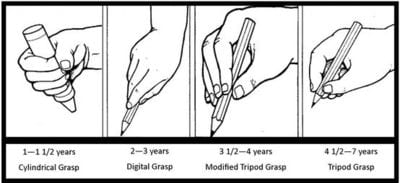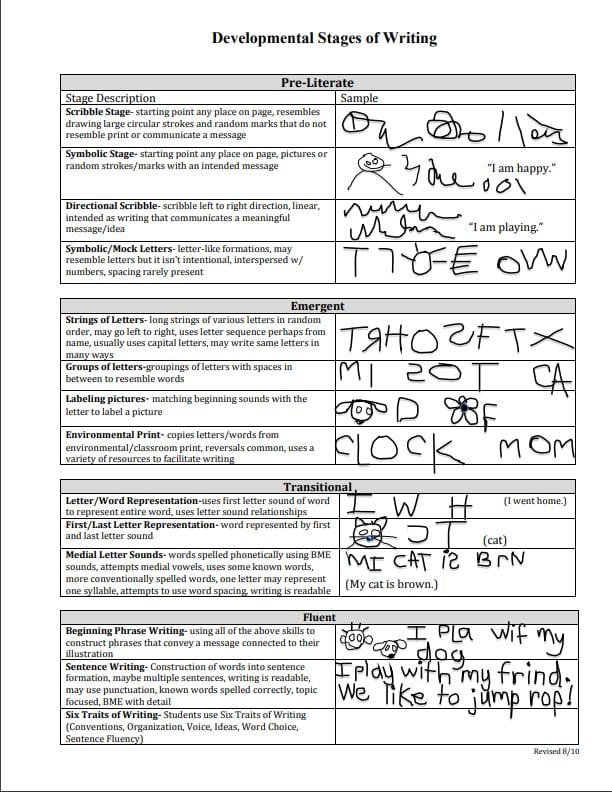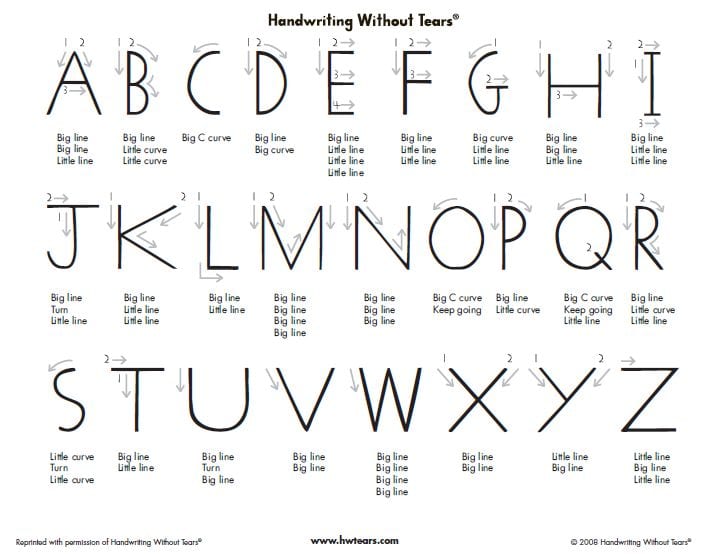As we talked about at our parent meeting, helping your child build independence will in turn help them develop fine motor strength and effect their writing abilities.
Encourage their efforts, be proud of their ability to try, and it does not have to be perfect (they are still learning and practicing).
As our children are developing throughout this year, you will notice a variety of stages with their fine motor skills. Those changes can be shown through pencil grip and writing. At the end of this blog post you can find strategies for promoting fine motor, literacy, and writing within your home. 🙂
Strategies for Developing Fine Motor and Literacy at Home
Some strategies you incorporate at home can include:
- Have your child write the grocery list
- Use tweezers to pick up pom poms
- Use yarn or string to thread beads
- Peel and stick stickers
- Using scissors to cut paper
- Rolling and flattening play-dough
- Zipping up a coat
- Fastening shoes and clothes with buttons, laces, or snaps
- Coloring using broken crayons
- Painting with Q Tips
Pencil Grip

As students develop their fine motor strength, their pencil grip changes. When you notice your children coloring or writing at home using a fist (cylindrical) grip or downward (digital) grip, help correct them showing them how to use a modified tripod or tripod grasp.
We use these stages as assessment tools in our classroom. This helps us to visualize which students might need additional help at writing times throughout our day as well as home support we can provide to strengthen their hands.
Stages of Writing

The stages of writing in preschool typically are Pre-Literate, Emergent, and Transitional. When students begin the year we tend to see a variety of the Scribble stage, Symbolic stage, Directional Scribble and Mock Letters.
During the Scribble stage, we are helping students develop their grip, focus on a goal for pictures, and discuss shapes incorporated in making pictures.
During the Symbolic stage, we are talking with the students about details for their pictures and a purpose for their writing.
During Directional Scribble, the children are understanding left to right when writing, and we are then discussing the sounds of the letters they want to write. We talk about goals for their writing and the formation of letters.
During Mock Letters, students are understanding that we use lines and curves to create letters. Then we use the language shown below on how to format those letters they want to use.
Handwriting Without Tears Curriculum

This is the curriculum we use within our program for handwriting. As our students are learning the names for the letters they are also learning how the letter is formed. The language we use to describe the letter formation is underneath each letter.

Be First to Comment